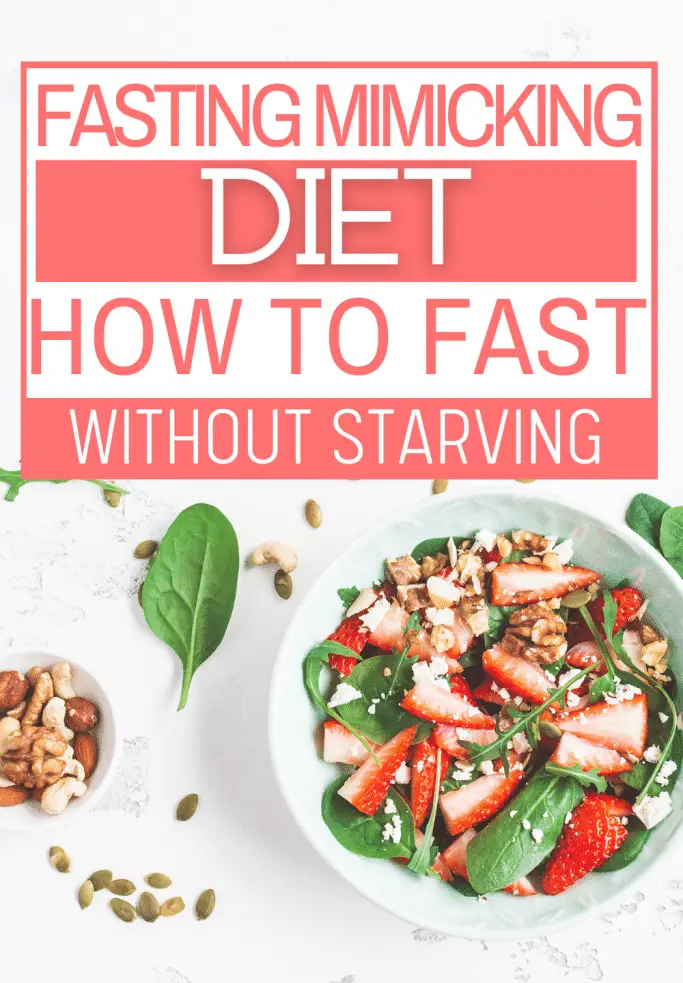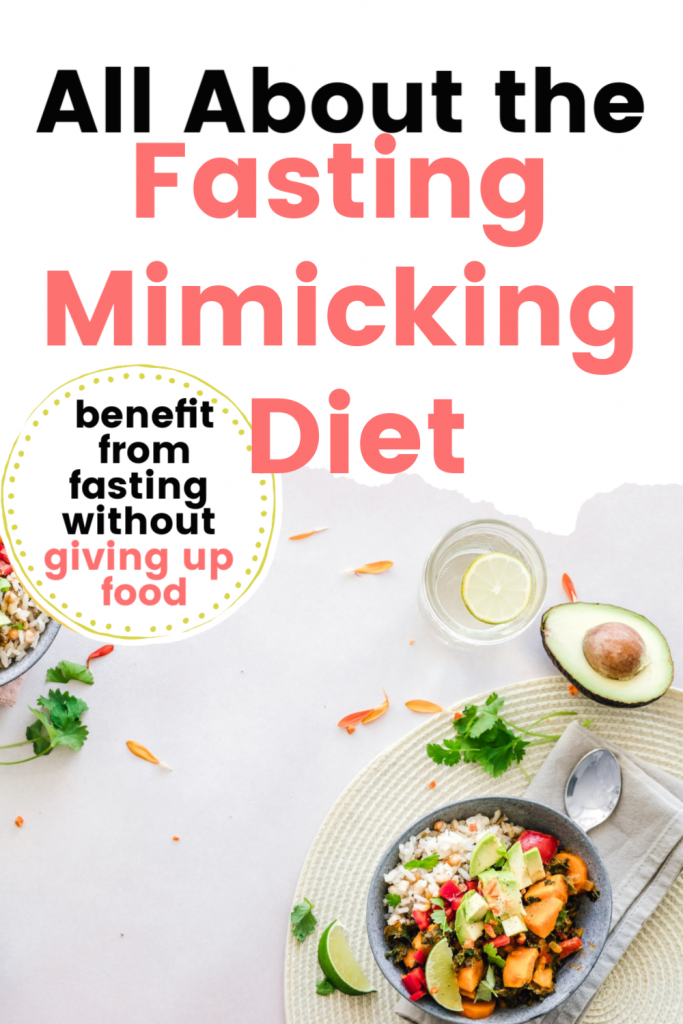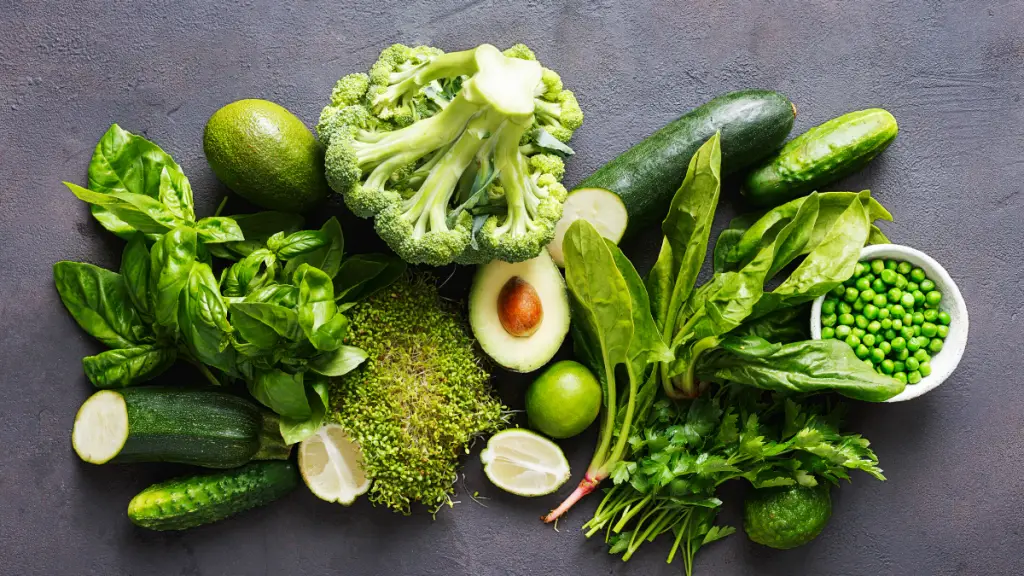Modified fasting, the name I give the Fasting Mimicking Diet, was the foundation of my weight loss success with intermittent fasting (read my Weight Loss Success Story During Perimenopause). Why? Because it helped me learn to listen to my body, reset my metabolism, and heal from the inside out.
What is Modified Fasting?
Modified fasting mimics the effects of water fasting without having to go on a water fast. We will go into more detail about the benefits of modified fasting. Let’s say that since most of us are ill-equipped to do a water fast. However, modified fasting is a powerful tool we can all learn to use successfully. At its core, modified fasting is simple: restrict your food intake for 4-5 days by consuming 40% or less of the calories you would typically consume. It keeps you nourished and puts less stress on your body than regular fasting.
The History of Modified Fasting
This fasting method was devised by Dr. Valter Longo, director of the University of Southern California’s Longevity Institute. His research has demonstrated that some diets can mimic fasting and enable the body to experience the healing effects of fasting while eating some foods. Since then, Dr. Longo has come up with his Fasting Mimicking Diet (FMD) in a box.

How Does the Modified Fasting Work?
Instead of eliminating all foods, you dramatically decrease your food intake for five days. You could purchase a Prolon kit, or go for a DIY approach. If you decide to do it yourself, here’s what you need to know:
- You need to eat only plant-based foods for the duration of the fast.
- You need to keep track of your calories and your macros.
- On day one, you will eat more (about 5-7 calories per lb of body weight). So, if you weigh 150 pounds (68 kg), you can eat 750-1050 calories). This amounts to about 26 grams of protein, 65 grams of fat, and 94 grams of carbs on your first day.
- On days 2-5, you need to keep your calories under 3-5 calories of body weight (so, again, if you weigh 150 pounds, that means you can consume 450-750 calories daily). If you have a fast metabolism, go for the higher end of the range. If you have a slower metabolism and you don’t need as many calories on an average day, for the lower end.
- Your macros should be about 10% protein, 56% fat, and 34% carbs on day one and 9% protein, 44% fat, and 47% carbs on the other days.
- Proteins provide about four calories per gram, so you will eat about 18 grams daily (the total number of calories from protein will be around 80).
- Carbs also provide about four calories per gram, so you will eat about 65-94 grams of carbs daily (around 270-376 calories).
- Fats provide about nine calories per gram. You will consume about 39 grams of fat daily (around 352 calories).
- Most would consider it safe to exceed the amount of fat in these ratios but recommend not to exceed the amounts of protein and carbs. I found it hard not to exceed the amount of protein on the first day (more food is consumed). I played around and removed nuts and seeds, but the amount of protein would stay at 13%. I didn’t feel it was a big problem. Besides, I have kept the macros for the remaining four days.

Modified Fasting Health Benefits
Fasting mimicking gives you similar health benefits to fasting. We hear more and more about the health benefits of fasting. Here are some of the benefits that are often mentioned:
- Immune system support: Could be used for the treatment of autoimmune diseases.
- Stem cell regeneration: As we age, our stem cells lose the ability to regenerate. Fasting can reverse this loss of function within 24 hours. It promotes the body’s ability to regenerate itself.
- Gut health: Fasting mimicking reduces intestinal inflammation and promotes the proliferation of good gut bacteria.
- Enhanced cognitive performance: A Fasting Mimicking Diet (FMD) applied to middle-aged and older mice improved cognitive function and increased longevity.
- Increased longevity: A FMD applied to middle-aged and older mice improved cognitive function and increased longevity.
- Reduced inflammation: Caloric restriction is known to improve inflammatory and autoimmune diseases, although we don’t quite understand the mechanism yet. It reduces certain inflammation markers.
- Weight Loss: This benefit is obvious. A calorie deficit leads to weight loss.
- Blood sugar and cholesterol levels: A 4-day FMD done every two months improved blood sugar and cholesterol levels.

How to Implement Modified Fasting
DIY Approach
The Fasting Mimicking Diet is now a patented protocol with a price tag of 250 USD. You might be wondering what other options you have. You can create your fasting-mimicking DIY plan if you follow the guidelines to the best of your abilities.
Remember:
- You will consume 40-50% of your regular calorie intake.
- Do your best to eat around 10% protein, 45% carbs, and 45% fat.
- Try to consume enough vegetables that amount to 50% of your calories.
Consider joining my private Facebook community for further support.

Fasting Mimicking Diet Meal Plans
Here’s a collection of the meal plan posts to help you get started:
- Easy 5-Day Detox to Balance Your Hormones and Lose Weight
- The Easiest and Simplest Meal Plan Ever For Your Modified Fast
- My DIY Fasting Mimicking Diet Plan
- Fasting Mimicking Diet Meal Plan and Recipes
- 5 Prolon-Inspired Soup Recipes for a Modified Fast
For more guidance, you can read A Do-It-Yourself Approach to Modified Fasting.
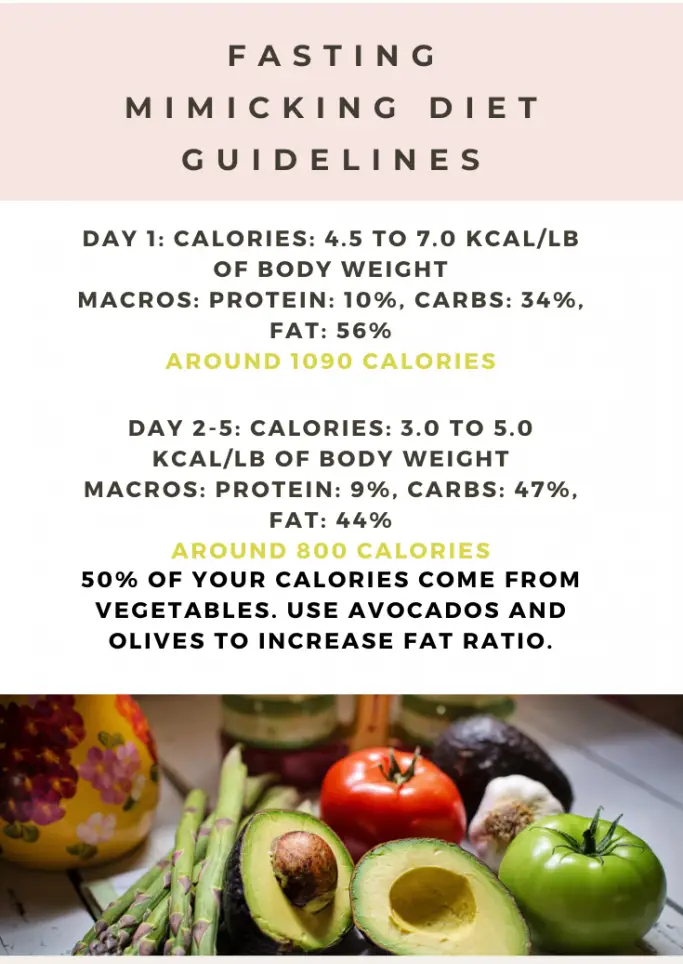
Food to Eat
- Carbohydrates from complex carbohydrate plant sources like vegetables, legumes, fruits, and whole grains.
- Fats from “healthy” oils (coconut oil, olive oil) and nuts (almonds, walnuts)
- Less than 30 g of sugars on day 1, and less than 20 g of sugars on days 2-5
- All foods are vegan, as well as gluten- and lactose-free
- Olives and/or avocado snacks to help bring the carb ratio down.
Foods to Avoid
- No animal-derived products
- No gluten
- No refined oils like canola oil, vegetable oil, soybean oil, safflower oil, corn oil, margarine (or any other ‘buttery’ spread).
Other Prepackaged Options
I recently learned about the Green Smoothie Girl’s Flash Fast. It’s a 3-day fast that includes energy bars and superfood meals. It costs 65 USD.
Modified Fasting Vs. Fasting
As I mentioned already, the fasting mimicking diet (FMD) is more doable for most people than water fasting but is it truly as effective? The answer is a resounding yes! In some cases, it appears to even be more effective than traditional water fasting. For example, a study conducted on mice with IBS obtained more significant results. The study analyzed the evolution of intestinal inflammation after two cycles of the FMD. The results underline the importance of the nutrients in the FMD plan and their role in minimizing inflammation.

Frequently Asked Questions
Why do a modified fast rather than a regular water fast?
We touched on that question a little bit already. Going without food for a few days may seem like an impossible task for many. I know it’s the case for me. For some, however, you may wonder if you should do a water fast instead. You may even feel that doing a water fast may be a bit easier (I have met someone who feels this way). I want to caution you that I know of a few wellness experts who have done water fasting, and they do not recommend it. Most of us don’t have the mental stamina to undergo the process. Moreover, our bodies have become so toxic that the side effects will impede our ability to go about our daily lives. Lastly, the nutrients provided by the FMD seem to accelerate the healing process.
Is modified fasting right for me?
You must make this decision for yourself. I am not here to tell you whether you should do it or not but if you are pregnant, breastfeeding, or underweight, I do not recommend you try modified fasting. There is no question that a modified fast can benefit almost everyone. However, you may choose to practice intermittent fasting instead. It’s all about experimenting to discover what works for you.

How should I prepare myself?
I recommend you prepare yourself mentally. You will get hungry even though you are allowed to eat some food. Make sure you have an assortment of herbal teas; they do help dampen the hunger signals. Plan what you are going to eat ahead of time. Read Everything You Need to Know to Create Your Modified Fast for more info on how you can do that. Furthermore, I suggest you get rid of the foods that might tempt you during your fast.
What foods can I eat on a Modified Fast?
When you are fasting mimicking, you may have coffee and tea. Limit yourself to two cups per day before lunch. I recommend only herbal teas after lunch, but black coffee before lunch has been shown to enhance the benefits of intermittent fasting. I have been having my usual coffee with coconut milk and honey, but I am planning on experimenting in the future.
Eat nuts, seeds, vegetables, fruits, and whole grains. I don’t eat whole grains during the fast, but you can if you want.
The Prolon kits include:

- Nut bars made from macadamia nut butter, honey, flax, almond meal, and coconut.
- Algal oil: serves as a vegan Omega-3 supplement.
- Soup blends: include quinoa, tomatoes, mushrooms.
- Herbal teas: include spearmint, hibiscus, and lemon-spearmint tea.
- Dark chocolate bars made with nuts and seeds.
- Kale crackers: include nutritional yeast and flax seeds.
- Olives: olives provide an easy high-in-fat snack every day.
- A powdered vegetable supplement: this helps you make sure you are giving your body a high dose of vitamins and minerals each day.
- A glycerol-based energy drink: allows you to retain water more efficiently.
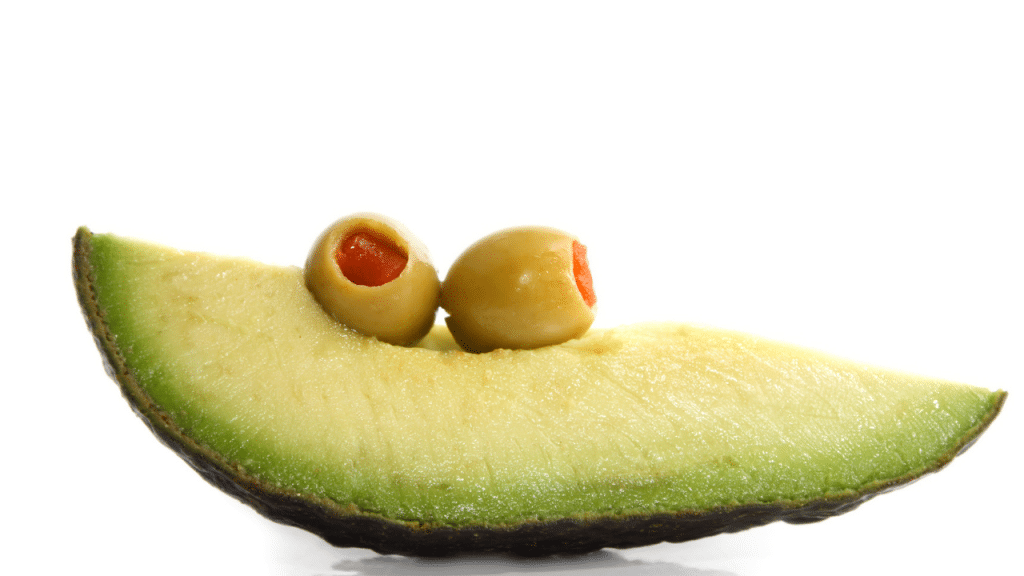
What foods should I avoid when doing a modified fast?
You need to avoid all the unhealthy foods you would normally avoid, like refined sugar and vegetable oils. The page Paleo Diet 101 is an excellent place to start. On top of that, you will avoid all animal products.
Can I change the recommended macros?
Yes! The recommended macros serve as a guide. You will benefit from the benefits of a modified fast even if you modify them. Some people adapt them to their keto lifestyle, for example. As I mentioned before, it is best to keep your carb and protein intake around the recommended amount, but you can increase your fats.
Furthermore, I wouldn’t sweat it too much and get paralyzed while trying to get the exact percentages. Close enough is good enough! Just do it, and you will learn from experience. Each of us is unique.
How often should I do a modified fast?
The research available usually studies subjects that were put on the FMD every two months. Dr. Longo suggests you do it every 1 to 3 months, depending on your health goals. If weight loss is one of the benefits you are looking for, once a month is a good place to start. Also, he recommends you do it 3-4 times a year. This is not something you should do every month all year.

How can I get curb the hunger cravings?
Let me break it to you: You will get hungry. Eating only 40-50% of your normal calorie intake will cause hunger pains. Remember: it’s temporary. I noticed that when I get so hungry that I don’t think I can go on any longer, I don’t even feel hungry anymore an hour later. However, there are a few things you can do to alleviate hunger. Coffee and tea are my two favorite cures. For more ideas, read 7 Most Effective Ways to Curb Hunger Cravings When Fasting.

Should I take supplements?
You don’t have to, but why not ensure you are getting as much of the vitamins and minerals you need during your fast? The Prolon kit comes with an Omega-3 supplement. I use the following supplements:
- Organic raw green powders to boost nutrient intake.
- Aloe vera juice to promote nutrient absorption and healing of the gut lining.
- Fiber blend to feel full and satisfied.
- A probiotic that helps decrease glyphosate in your bloodstream and reduces the C-Reactive inflammation marker.
You can contact me to learn about the exact supplements I have been using.

In Summary
A modified fast is a 5-day calorie-restricted fast that allows you to reap all the benefits of prolonged fasting without having to go on a water fast. You can accomplish this by eating 40-50% of your regular calorie intake during the duration of your fast. You can buy the Prolon kit or do-it-yourself. Just keep in mind that Dr. Longo doesn’t recommend you do it yourself.
A modified fast can be an excellent idea because our bodies are meant to go through cycles of fasting and eating. A modified fast is more doable than a water fast for the average person.
